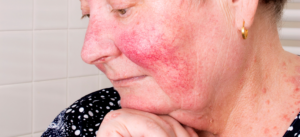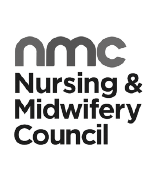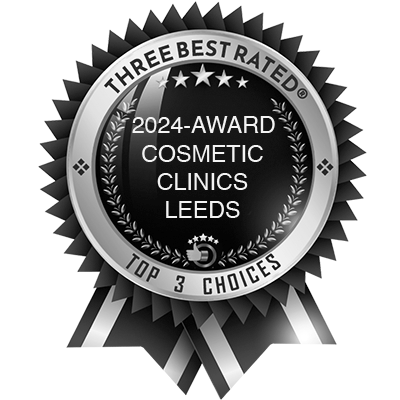Rosacea is a common chronic skin condition, primarily affecting the face, that causes persistent redness, sensitivity, and sometimes acne-like bumps. Although rosacea is widespread, many individuals aren’t fully aware of what it entails or may mistake it for other skin concerns, such as acne or sunburn. Understanding rosacea, its causes, and the treatment options available can help sufferers manage their symptoms more effectively.
What is Rosacea?
Rosacea is a non-contagious, inflammatory skin condition that typically affects adults over the age of 30, though it can occur at any age. It is particularly common in individuals with fair skin, although anyone can develop rosacea. While the exact cause of rosacea is not yet fully understood, several factors are believed to play a role, including genetics, abnormalities in the blood vessels, and immune system dysfunction.
Environmental and lifestyle factors also contribute to flare-ups, including sun exposure, stress, and certain foods. While rosacea cannot be cured, recognising its symptoms and triggers is essential for managing the condition effectively.
Common Symptoms of Rosacea
Rosacea symptoms vary from person to person, but some common signs include:
1. Persistent Facial Redness
Redness on the face is one of the hallmark signs of rosacea, often appearing as a persistent flush or sunburn. The affected areas are usually the cheeks, nose, forehead, and chin.
2. Visible Blood Vessels
Small, dilated blood vessels (called telangiectasia) may become visible on the surface of the skin, particularly around the cheeks and nose. These are often a result of inflammation and increased blood flow to the skin’s surface.
3. Acne-like Bumps
Some individuals with rosacea develop small, red, acne-like bumps (papules and pustules) on the face. Unlike regular acne, these bumps are not caused by clogged pores but are due to underlying inflammation.
4. Skin Sensitivity
The affected areas of the face may feel warm to the touch and become irritated easily. Many people with rosacea report a burning or stinging sensation, especially during flare-ups.
5. Eye Irritation (Ocular Rosacea)
In some cases, rosacea can affect the eyes, leading to dryness, redness, irritation, and a sensation similar to having grit in the eyes. Ocular rosacea may require specific treatment, as it can lead to complications if left untreated.

Causes and Triggers of Rosacea
Although the precise cause of rosacea remains unknown, several factors are thought to contribute to its development. Genetics appear to play a significant role, with rosacea often running in families. Other possible contributing factors include:
1. Blood Vessel Abnormalities
The dilation of blood vessels near the skin’s surface can cause facial redness and visible blood vessels.
2. Immune System Dysfunction
Some researchers believe that an overactive immune response could contribute to the inflammation seen in rosacea
3. Microorganisms
A skin mite called Demodex folliculorum, which lives on human skin, may be more prevalent in people with rosacea, potentially triggering flare-ups.
Certain triggers can also cause rosacea symptoms to worsen. Identifying and avoiding these triggers is key to managing the condition. Common rosacea triggers include:
1. Sun Exposure
The dilation of blood vessels near the skin’s surface can cause facial redness and visible blood vessels.
2. Hot Weather or Extreme Temperatures
Some researchers believe that an overactive immune response could contribute to the inflammation seen in rosacea
3. Spicy Foods and Alcohol
A skin mite called Demodex folliculorum, which lives on human skin, may be more prevalent in people with rosacea, potentially triggering flare-ups.
4. Stress
Emotional stress is a known trigger for many skin conditions, including rosacea.
Rosacea Treatment Options
While rosacea cannot be cured, the good news is that it can be managed effectively. The right combination of skincare, lifestyle changes, and medical treatments can help reduce the frequency and severity of flare-ups.
Below are some of the most effective treatment options available:
- Identifying and Avoiding Triggers
One of the most important aspects of managing rosacea is identifying personal triggers and taking steps to avoid them. For many, this means wearing a daily sunscreen, avoiding direct sunlight, and limiting consumption of spicy foods and alcohol.
Rosacea sufferers should keep a diary to track flare-ups and identify which lifestyle factors may be contributing to their condition. Common triggers include:
- Sun exposure
- Hot drinks
- Stress
- Certain skincare products with harsh chemicals
- A Gentle Skincare Routine
Individuals with rosacea should adopt a gentle skincare routine that soothes and protects the skin. This often includes using mild, fragrance-free cleansers and moisturisers that are formulated for sensitive skin. It is also crucial to choose the right sunscreen—physical sunscreens, which use ingredients like zinc oxide or titanium dioxide, are often recommended over chemical sunscreens, which can irritate the skin.
We recommend products such as:
- Obagi Nu-Derm Gentle Cleanser: Ideal for sensitive skin, this cleanser helps soothe irritation without stripping the skin.
- Obagi Hydrate: A non-comedogenic moisturiser that provides long-lasting hydration.
- Obagi Sunshield SPF: A physical sunscreen that protects against UV damage without irritating sensitive skin.
- Topical Medications
For more persistent symptoms, a dermatologist may recommend prescription topical treatments. These include medications that reduce inflammation and redness, such as metronidazole, azelaic acid, or ivermectin cream. These medications help control the inflammatory response and may reduce the appearance of acne-like bumps.
- LED Therapy
LED light therapy, such as Dermalux, is an increasingly popular option for managing rosacea. LED treatments target blood vessels under the skin, helping to reduce redness and inflammation while promoting collagen production. Dermalux uses non-invasive wavelengths of light to calm irritated skin, reduce visible blood vessels, and improve overall skin tone. To learn more about our Deralux treatment, CLICK HERE.
A typical course of Dermalux involves multiple sessions per week over several weeks. Many patients experience noticeable improvements in redness and skin texture after completing the recommended course of treatment.
Emotional Impact of Rosacea
Living with rosacea can take a toll on emotional well-being. The visible nature of the condition often causes embarrassment, self-consciousness, and anxiety in social situations. It’s important to remember that rosacea is manageable, and with the right approach, individuals can regain control of their skin.
Seeking advice from a dermatologist or skincare specialist is crucial in developing a personalised treatment plan. Professional guidance can help sufferers not only treat their symptoms but also cope with the psychological aspects of rosacea.
Final Thoughts on Rosacea
While rosacea is a chronic skin condition, it does not have to control your life. With proper management—through identifying and avoiding triggers, following a soothing skincare routine, and seeking appropriate medical treatments—rosacea symptoms can be effectively minimised. Many individuals see significant improvement through lifestyle adjustments and professional treatments like LED therapy and topical medications.
If you suspect you may have rosacea or are struggling to manage your symptoms, consult a dermatologist or skincare specialist. Early intervention is key to controlling flare-ups and maintaining the health and appearance of your skin. With the right care, you can reduce the emotional and physical impact of rosacea, boosting your self-confidence and quality of life.
To learn more about the treatment options available from Face Perfect Clinic, book a consultation with a member of our team by clicking here.






